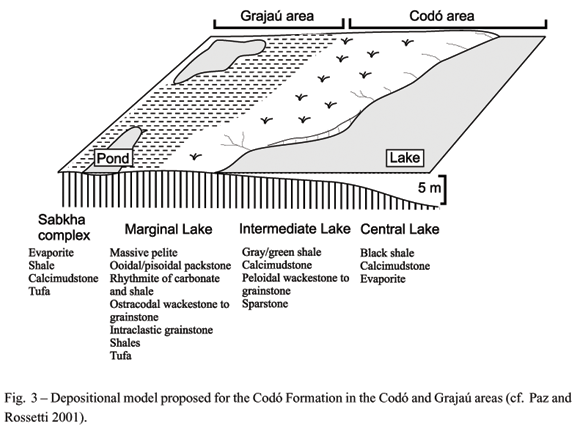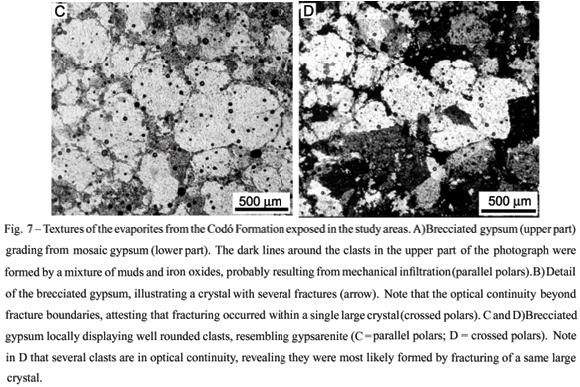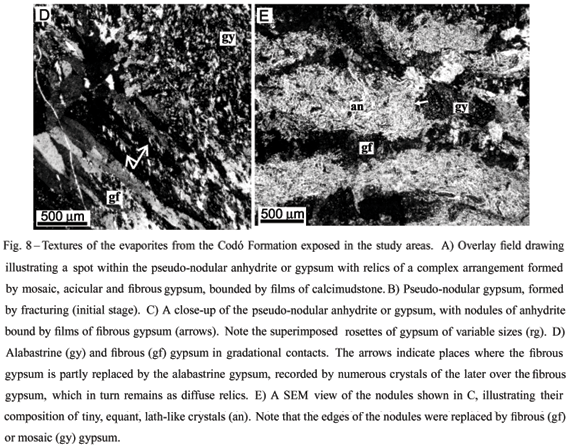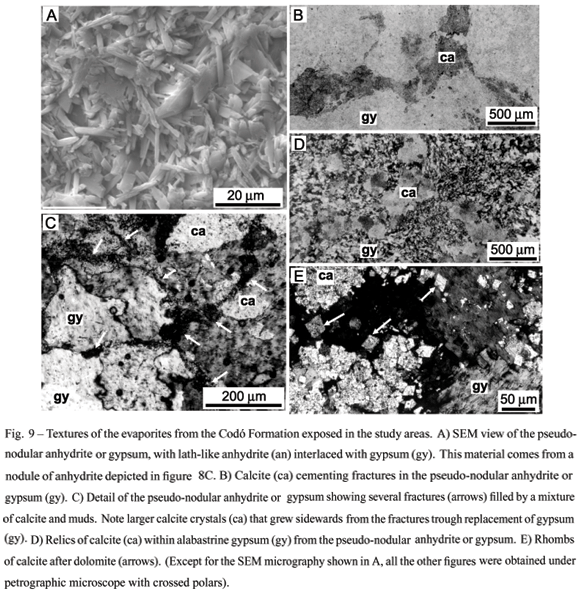An original and detailed study focusing the petrography of evaporites from the Late Aptian deposits exposed in the eastern and southern São Luís-Grajaú Basin is presented herein, with the attempt of distinguishing between primary and secondary evaporites, and reconstructing their post-depositional evolution. Seven evaporites phases were recognized: 1. chevron gypsum; 2. nodular to lensoidal gypsum or anhydrite; 3. fibrous to acicular gypsum; 4. mosaic gypsum; 5. brecciated gypsum or gypsarenite; 6. pseudo-nodular anhydrite or gypsum; and 7. rosettes of gypsum. The three first phases of gypsum display petrographic characteristics that conform to a primary nature. The fibrous to acicular and mosaic gypsum were formed by replacement of primary gypsum, but their origin took place during the eodiagenesis, still under influence of the depositional setting. These gypsum morphologies are closely related to the laminated evaporites, serving to demonstrate that their formation was related to replacements that did not affect the primary sedimentary structures. The pseudo-nodular anhydrite or gypsum seems to have originated by mobilization of sulfate-rich fluids during burial, probably related to halokinesis. The rosettes of gypsum, which intercept all the other gypsum varieties, represent the latest phase of evaporite formation in the study area, resulting from either intrastratal waters or surface waters during weathering.
evaporite; petrography; paleolake; sabkha; Late Aptian; São Luís-Grajaú Basin

















